Back to Main Index
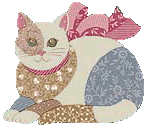
The Library
Basics - Information, Skills, Crafts
 To read more about these books or see other reviews, follow the links.
To read more about these books or see other reviews, follow the links.
Building a good home reference library is important. We want books that will teach us and inform us and be worth every penny we invest in them. They also have to have information that will span a lifetime of use. That's a tall order for a book, but the following selections have served me well over the years and are still in print in one revision or another. I'm always searching out the best of the new books, so I'll be adding from time to time.
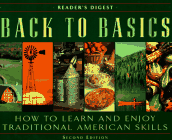 Back to Basics: How to Learn and Enjoy Traditional American Skills
Back to Basics: How to Learn and Enjoy Traditional American Skills
Reader's Digest; March 1997; HC
I don't know which reprint this is, but it's been done often since it first appeared nearly 20 years ago. If I had to rebuild my life without any modern amenities and could only have one book, this one would have to be it. Everything from evaluating land with a view towards purchasing it, preparing the site, building with different materials, developing a water supply, how to build a fireplace, stone walls, brick pavements and fences; how to make your home energy efficient with wind, water, solar and more; raising your own livestock, vegetables, fruit; preserving your food, including meat, fish, making dairy products, maple sugaring, bread baking, how to cook with wood; skills and crafts how-to's from making your own natural dyes, spinning, weaving, gourd crafting, etc, etc, etc. It's an incredibly valuable resource book and every home library should have one.
 Five Acres and Independence: A Handbook for Small Farm Management
Five Acres and Independence: A Handbook for Small Farm Management
PB; 1978
After World War II there was a housing shortage. Men came back from the war, the US was burgeoning with the post war baby boom and young families were seeking escape and independence in the countryside (which today is known as the suburbs). This book came along at the right time and because the information and plans it outlines are as practical today as they were then, the book is still in print.
 Yankee Magazine's: Make It Last: Over 1,000 Ingenious Ways to Extend the Life of Everything You Own
Yankee Magazine's: Make It Last: Over 1,000 Ingenious Ways to Extend the Life of Everything You Own
Earl Proulx and the Editors of Yankee Magazine; HC; 1996
As a woman I really do want to know how to move heavy furniture without damaging my floor, and how to get rid of those white water spots on my furniture. The title speaks for itself and anyone who knows the Earl Proulx column from Yankee Magazine can easily imagine the real value of having this book as a reference in the home.
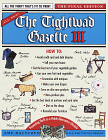 The Tightwad Gazette
The Tightwad Gazette
Amy Dacyczyn; PB; 1993
Amy Dacyczyn is the undisputed queen of frugality. This is the first of 3 volumes outlining thousands of tips on how to use, reuse and use it up. There are tips on getting freebies and how to cut the cost of just about everything so you have more money leftover to save or use on things you want. How to get out of debt and how to stay there.
The Tightwad Gazette II Amy Dacyczyn; PB; 1995.
The Tightwad Gazette III Amy Dacyczyn; PB; 1997
 Clean & Green: The Complete Guide to Nontoxic and Environmentally Safe Housekeeping
Clean & Green: The Complete Guide to Nontoxic and Environmentally Safe Housekeeping
Annie Berthold-Bond; PB; 1994.
"485 Ways to Clean, Polish, Disinfect, Deodorize, Launder, Remove Stains - Even Wax Your Car Without Harming Yourself or the Environment"
I had already developed many of my own cleaning recipes when this book hit the bookshelves. There were plenty of new tricks in there for me though. Highly recommended for anyone interested in non-toxic cleaning.
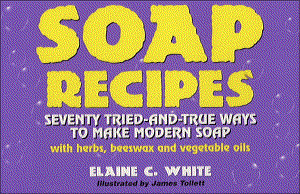 Soap Recipes: Seventy Tried and True Ways to Make Modern Soap with Herbs, Beeswax and Vegetable Oils
Soap Recipes: Seventy Tried and True Ways to Make Modern Soap with Herbs, Beeswax and Vegetable Oils
Elaine C. White; PB; 1995
Ms. White's books are always worth a bit of a wait. I have several of her books and love her simple language and instructions.
Super Formulas, Arts and Crafts
Elaine C. White; PB; 1993
Another great one from Ms. White. Making your own non-toxic products at home saves money. And there's something very rewarding about doing it yourself or just in learning "how" these things are done.
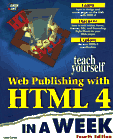 Teach Yourself Web Publishing with HTML 4 in a week
Teach Yourself Web Publishing with HTML 4 in a week
Laura Leman/621 pages/4th edition/PB/1997
This one doesn't have a thing to do with the household, but it has a lot to do with you. If you have a creative drive, if you have something you want to say, if you want to put it out onto the web, then this is the book to have. Everyone gets a break from their jobs except the career homemaker. We need our outlets, our own time, our own space. I cut my teeth on this book and it's still my main reference, although you might also want to check out HTML 4 for Dummies.
 Kaffe Fassett: The Best of Rowan: 50 Designer Patterns
Kaffe Fassett: The Best of Rowan: 50 Designer Patterns
Kaffe Fassett; HC; 1998
If you're a knitter, then you know Kaffe Fassetts designs. This book puts 50 of his best together in one place.
 Places of the Soul
Places of the Soul
Christopher Day; PB; 1993
The topic of this book may seem to be a bit off the mark for a homemaker's library, but for most of my adult life I have believed fervently that ugly environments make people ugly. In my daydreams I would refashion the great cities into clean, efficient and attractive places to live. Along came Mr. Day's book a few years ago and I knew he was speaking to my heart's desire. This book addresses "architecture and environmental design as a healing art". If you plan to build your dreamhouse someday, you might want to read this one first for the ultimate in a healthy house.
 How to Get More in Life with the Money You Already Have
How to Get More in Life with the Money You Already Have
Carol Keeffe; PB; 1995
New ways of looking at the old problem of stretching our incomes. Lots of good practical advice and plans.
©1998 Ernestina Parziale
Back to top


 Back to Basics: How to Learn and Enjoy Traditional American Skills
Back to Basics: How to Learn and Enjoy Traditional American Skills Five Acres and Independence: A Handbook for Small Farm Management
Five Acres and Independence: A Handbook for Small Farm Management Yankee Magazine's: Make It Last: Over 1,000 Ingenious Ways to Extend the Life of Everything You Own
Yankee Magazine's: Make It Last: Over 1,000 Ingenious Ways to Extend the Life of Everything You Own The Tightwad Gazette
The Tightwad Gazette Clean & Green: The Complete Guide to Nontoxic and Environmentally Safe Housekeeping
Clean & Green: The Complete Guide to Nontoxic and Environmentally Safe Housekeeping Soap Recipes: Seventy Tried and True Ways to Make Modern Soap with Herbs, Beeswax and Vegetable Oils
Soap Recipes: Seventy Tried and True Ways to Make Modern Soap with Herbs, Beeswax and Vegetable Oils Teach Yourself Web Publishing with HTML 4 in a week
Teach Yourself Web Publishing with HTML 4 in a week Kaffe Fassett: The Best of Rowan: 50 Designer Patterns
Kaffe Fassett: The Best of Rowan: 50 Designer Patterns Places of the Soul
Places of the Soul How to Get More in Life with the Money You Already Have
How to Get More in Life with the Money You Already Have